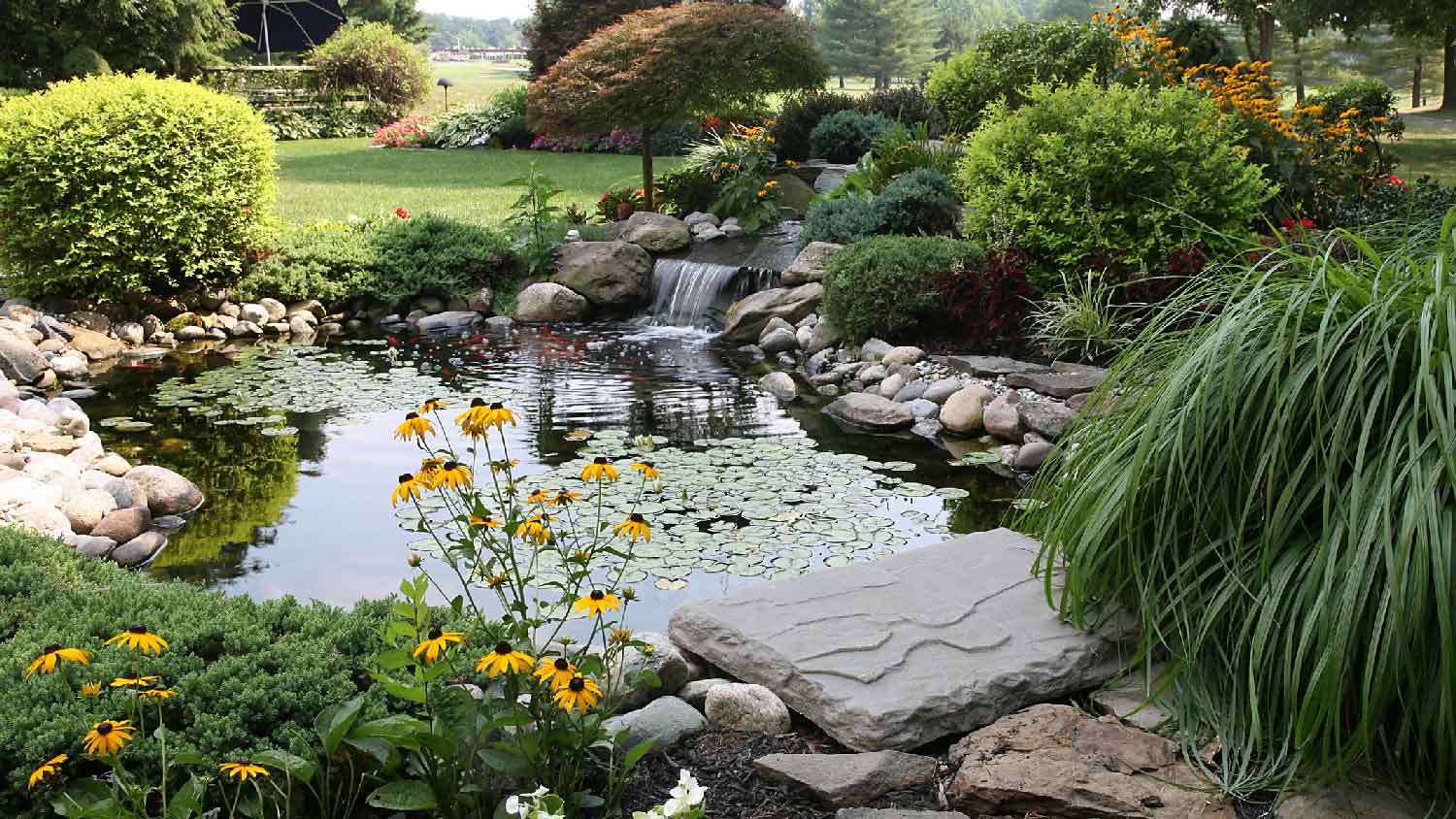
Leveling your yard can help with drainage and prevent damage to your home. Learn the cost to level a yard in Columbus, OH, and what factors can affect the price.
Hail is not a garden’s (or gardener’s) best friend


While gentle rainfall is welcome for your flowers, plants, and vegetables, hail crashes the garden party. Hailstones have been known to damage roofs, dent cars, and break windows. Now imagine what it can do to your landscaping. Here’s what you need to know about how to protect a garden from hail.

Hail, like rain and snow, is a form of precipitation. But unlike misty raindrops, hail falls in the form of solid pellets of ice that range in size from that of peas to grapefruits (or even bigger). In fact, the largest hailstone on record in the U.S. fell on June 23, 2010, in Vivian, South Dakota, boasting an 8-inch diameter and weighing nearly two pounds, according to the National Oceanic and Atmospheric Administration’s (NOAA) National Severe Storms Laboratory.
Hail can form during a thunderstorm when raindrops get sucked back upward into the freezing part of the atmosphere to form ice. As they collect other water from the atmosphere that freezes onto their surface, these hailstones grow. When the updraft of the storm can’t hold the weight anymore, the hail falls to earth. Some hail falls straight down, but when the wind is strong enough, it can descend at sharp angles.
You don’t need a degree in meteorology to know that hail of any size is a lot harsher than raindrops falling softly on your petunias or vegetables. That’s why it’s important to have a plan in place to protect your garden from an icy onslaught.
Weather can change at a moment’s notice, but you can be proactive in your garden’s defense against hail.
You’re likely already on the lookout for rain, so you know when to take a break from watering your lawn and garden. But pay attention closely to when thunderstorms are ahead. While not all thunderstorms bring hail with them, severe thunderstorms with high winds certainly can.
A healthy garden is a hardy garden. Water and fertilize your garden well to grow strong plants that have a better chance of standing up to hail.
Your local hardware or lawn and garden store likely has items on hand for protecting your garden. In general, these are some of the things you can expect to purchase if you don’t already have some on hand:
Hail netting
Mesh screen
Tarps
Wooden posts/stakes to hold up aforementioned coverings
Polyester wire to attach coverings to stakes
Row covers for low-growing plants and vegetables
Buckets, trash cans, and other containers
Bricks or heavy stones (for keeping buckets from overturning)

It might detract from the beauty of your landscape, but it’s best to hammer those wooden stakes into your garden prior to the start of summer, when thunderstorms are more prevalent. This way, when the storm clouds start to roll in, all you have to do is place the tarp, hail netting, or other covering over the stakes.
When a storm is in the forecast, it’s time to take action. Depending on what you’re able to purchase, set up your hail-proofing materials.
For tarp, mesh, and hail netting: Attach your material to the wooden stakes around your garden using the polyester wire.
For row covers: Depending on the type you purchase or make, you can lay the row cover loosely over your garden and hold the edges down with bricks or soil.
For buckets and trash cans: Place these over your more susceptible plants, being sure not to squish other plants in the process. Secure them with a few bricks on top.
Plants, flowers, and budding herb gardens planted in pots or other portable containers can always be brought indoors temporarily in the face of a severe storm. While it’s likely not possible for you to design your entire outdoor garden in pots, it will be easier for the more portable plants to take cover briefly—even if it means storing them under your deck or in your garage until the weather clears.
Whether you’re an experienced gardener or just getting started, it’s always best to grow plants, shrubs, and trees that are hardy enough to withstand harsh weather patterns. Drought-tolerant plants tend to be among the hardiest, but talk to a local garden pro to see which plants will thrive in your region.

In any type of inclement weather, your personal safety should be prioritized over anything else. If a hailstorm or other type of severe weather event catches you unawares, it’s better to seek shelter of your own and deal with the aftermath in your garden later.
No one likes to lose anything dear to them. You’ve spent many hours tending to and nurturing your garden. If you enjoy the work, as many gardeners do, try to view this as a challenge for rebuilding your garden as needed in the wake of a hailstorm.
Unfortunately, we can’t prevent hail or any other type of weather phenomenon from damaging our property. We can only check the forecast, prepare accordingly, and hope for the best.
Gardening is an enjoyable DIY project for many people. That said, when natural predators—including Mother Nature herself—get in the way of a healthy garden, it’s beneficial to at least consult with a local landscaping company for tips on how to better protect your yard.
While it’s probably not feasible to have a pro gardener on standby for a hailstorm, it might help to hire a pro to optimize your garden protection if you live in a hailstorm-prone region. They will likely give you recommendations on severe-weather tolerant plants as well as landscape designs that make it easier—and faster—to set up temporary protection for your plants, flowers, shrubs, and vegetables.
From average costs to expert advice, get all the answers you need to get your job done.

Leveling your yard can help with drainage and prevent damage to your home. Learn the cost to level a yard in Columbus, OH, and what factors can affect the price.

Landscape curbing can really improve the look of a yard, but at what cost? Find out how much it costs and the different ways you can do it

Growing plants with a hydroponic gardening water system can be a big investment. To know how much it costs to build a hydroponic garden, consider the system, technology, size, and whether you hire a pro. This guide will help calculate costs.

How big is your pond? Knowing how much water your pond can hold will help you choose the right treatments for it and the proper number of aquatic life.

Dreaming of landscaping that makes your entire neighborhood jealous but not sure you’re ready? Ask these common landscaping questions before getting started.

Wondering how to clean dog urine off artificial grass? Revitalize your turf (even if it's pet-friendly) with this simple seven-step cleaning guide.